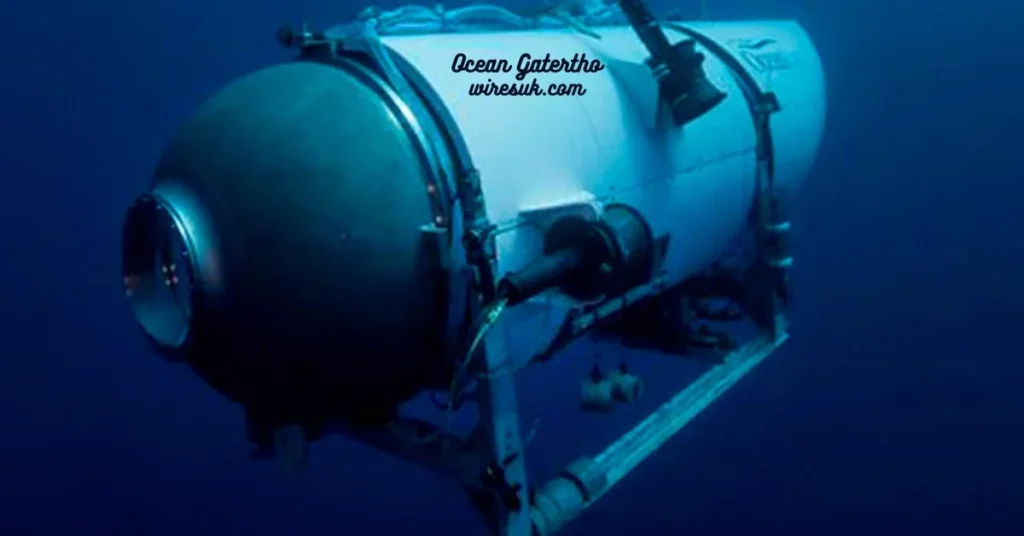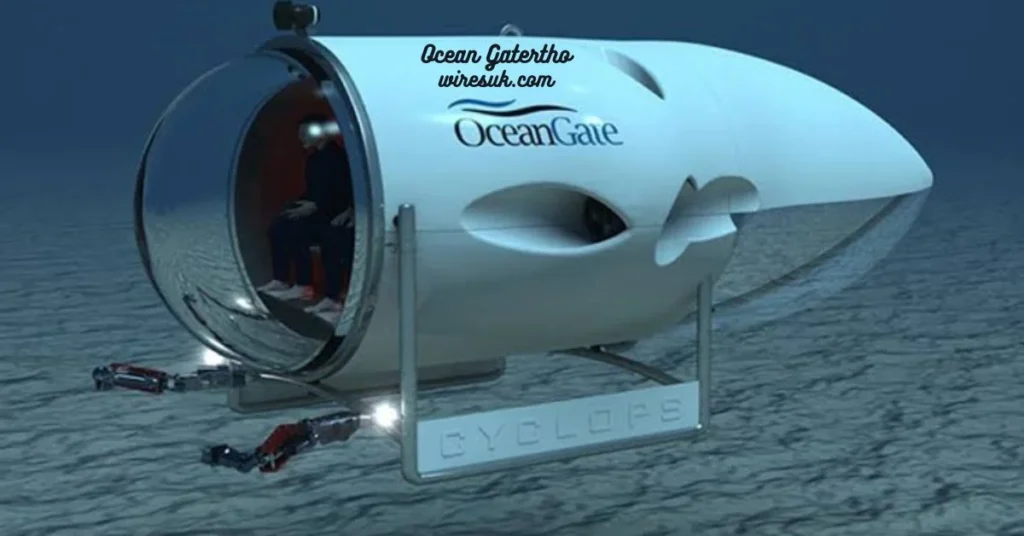Introduction
The vastness of the world’s oceans, covering more than 70% of the Earth’s surface, has always inspired awe and curiosity. The ocean is not just a body of water; it is a vast, unexplored frontier teeming with life, mysteries, and opportunities. The concept of Ocean Gatertho emerges from this backdrop, representing the next phase in marine exploration and technological advancement. As we move further into the 21st century, the intersection of technology, environmental science, and oceanography is more critical than ever. Ocean Gatertho is poised to be at the forefront of this evolution, promising to revolutionize our understanding and interaction with the marine world.
The Significance of Ocean Gatertho
Ocean Gatertho is not just a concept but a movement that encapsulates the potential of modern technology to explore, preserve, and utilize the oceans responsibly. The term can be broken down into two parts: Ocean representing the marine environment and Gatertho, a neologism that symbolizes the gateway to future technological advancements. Together, they reflect a vision of sustainable marine exploration, where cutting-edge technology is used not just to explore but to protect and harness the ocean’s resources in a way that ensures their availability for future generations.
Historical Context: The Evolution of Marine Exploration

The history of marine exploration dates back thousands of years. Ancient civilizations, from the Phoenicians to the Polynesians, ventured into the unknown seas, driven by trade, conquest, and curiosity. However, it wasn’t until the Age of Exploration in the 15th and 16th centuries that humanity began to map the world’s oceans systematically.
With the advent of the Industrial Revolution in the 18th century, marine exploration took a significant leap forward. The development of steam-powered ships, diving equipment, and later, submarines, allowed explorers to reach previously inaccessible parts of the ocean. In the 20th century, technological advancements like sonar, remote-operated vehicles (ROVs), and deep-sea submersibles enabled scientists to explore the ocean’s depths, revealing ecosystems and geological formations that were previously unimaginable.
Ocean Gatertho represents the next step in this evolution, where artificial intelligence (AI), robotics, biotechnology, and other cutting-edge technologies converge to push the boundaries of what is possible in marine exploration.
The Role of Technology in Ocean Gatertho
One of the core tenets of Ocean Gatertho is the use of advanced technology to explore and understand the ocean in ways that were previously impossible. Below are some of the key technological advancements that are driving this movement:
Autonomous Underwater Vehicles (AUVs)
AUVs are unmanned, programmable robotic devices that can operate independently in the ocean for extended periods. They are equipped with sensors, cameras, and other instruments that allow them to gather data, map the seafloor, and even collect samples. AUVs are particularly useful for exploring deep-sea environments, where human-operated vehicles are impractical or dangerous.
Artificial Intelligence and Machine Learning
AI and machine learning algorithms are increasingly being used to analyze the vast amounts of data collected by marine scientists. These technologies can identify patterns and make predictions that would be impossible for humans to detect. For example, AI can be used to track and predict the movement of marine species, monitor changes in ocean temperatures, and even identify potential new areas for exploration.
Biotechnology
Biotechnology is playing a growing role in marine exploration and conservation. For example, scientists are using genetic sequencing to study the biodiversity of marine ecosystems and to develop new drugs and other products from marine organisms. Biotechnology is also being used to develop new methods for cleaning up oil spills and other forms of marine pollution.
Satellite and Remote Sensing Technologies
Satellites equipped with remote sensing technology have become indispensable tools for monitoring the ocean on a global scale. These satellites can measure sea surface temperatures, track ocean currents, and even monitor the health of coral reefs. The data collected by satellites is crucial for understanding the impact of climate change on the oceans and for developing strategies to mitigate its effects.
3D Printing and Advanced Materials
The development of advanced materials and 3D printing technology is opening up new possibilities for ocean exploration. For example, 3D printing can be used to create custom parts for underwater vehicles and other equipment, while advanced materials can make these vehicles more durable and resistant to the harsh conditions of the deep sea.
The Environmental Imperative
While the technological advancements associated with Ocean Gatertho are exciting, they also come with significant environmental responsibilities. The oceans are facing unprecedented threats from climate change, pollution, overfishing, and habitat destruction. The challenge for Ocean Gatertho is to leverage technology in a way that not only enhances our understanding of the ocean but also contributes to its preservation and restoration.
Climate Change Mitigation

The ocean plays a critical role in regulating the Earth’s climate, absorbing about a quarter of the CO2 emissions produced by human activities. However, this has led to ocean acidification, which threatens marine life, particularly organisms like coral and shellfish that rely on calcium carbonate to form their shells and skeletons. Technologies that can monitor and mitigate the effects of ocean acidification are essential for preserving marine ecosystems.
Marine Pollution
Pollution, particularly plastic pollution, is one of the most significant threats to the oceans. Ocean Gatertho is focused on developing technologies that can clean up existing pollution and prevent new pollution from entering the ocean. For example, advanced filtration systems can remove microplastics from wastewater before it reaches the ocean, while drones and other autonomous vehicles can be used to collect plastic waste from the ocean’s surface.
Sustainable Fishing Practices
Overfishing is depleting fish stocks at an alarming rate, threatening the food security of millions of people who rely on fish as a primary source of protein. Ocean Gatertho is promoting the use of technology to develop sustainable fishing practices. For example, AI-powered systems can monitor fish populations in real-time, allowing for more accurate and sustainable catch limits. Additionally, aquaculture, or the farming of fish and other marine organisms, can be made more sustainable through the use of advanced technology.
Marine Protected Areas (MPAs)
MPAs are designated areas of the ocean where human activity is restricted to protect biodiversity and ecosystems. Ocean Gatertho supports the expansion and effective management of MPAs through the use of technology. For example, satellite and drone technology can be used to monitor MPAs and ensure that they are not being illegally exploited.
The Economic Potential of Ocean Gatertho
In addition to its environmental benefits, Ocean Gatertho also has significant economic potential. The ocean is a vast resource that is still largely untapped, and the technologies associated with Ocean Gatertho could unlock new economic opportunities in a variety of sectors:
Blue Economy
The Blue Economy refers to the sustainable use of ocean resources for economic growth, improved livelihoods, and jobs, while preserving the health of ocean ecosystems. Ocean Gatertho is expected to play a key role in the growth of the Blue Economy, particularly in areas like marine biotechnology, renewable energy, and sustainable tourism.
Marine Biotechnology
The ocean is home to a vast array of organisms that have yet to be studied or utilized. Marine biotechnology, which involves the exploration and exploitation of marine resources for pharmaceutical, industrial, and agricultural applications, is a rapidly growing field. For example, compounds derived from marine organisms are being used to develop new drugs, while marine enzymes are being used in industrial processes.
Renewable Energy
The ocean has the potential to be a significant source of renewable energy, particularly through technologies like offshore wind farms, tidal and wave energy, and ocean thermal energy conversion (OTEC). Ocean Gatertho is expected to drive innovation in these areas, making ocean-based renewable energy more efficient and cost-effective.
Sustainable Tourism

As interest in eco-tourism and sustainable travel grows, the ocean is becoming an increasingly popular destination for tourists. Ocean Gatertho is expected to promote the development of sustainable marine tourism practices, ensuring that tourism benefits local communities while minimizing its impact on the environment.
Challenges and Ethical Considerations
While Ocean Gatertho presents many opportunities, it also comes with significant challenges and ethical considerations. The rapid pace of technological advancement raises important questions about the potential impact on marine ecosystems and the rights of coastal communities:
Environmental Impact
The deployment of new technologies in the ocean environment can have unintended consequences. For example, deep-sea mining, which is being explored as a potential source of valuable minerals, could have devastating effects on deep-sea ecosystems. It is essential that the environmental impact of new technologies is carefully assessed and that measures are put in place to mitigate any potential harm.
Indigenous and Coastal Communities
Many indigenous and coastal communities have a deep cultural and spiritual connection to the ocean. The introduction of new technologies and the exploitation of ocean resources can have significant social and economic impacts on these communities. It is essential that their rights and interests are respected and that they are actively involved in the decision-making process.
Global Governance
The ocean is a global commons, and its management requires international cooperation. However, the current framework for ocean governance is fragmented and often ineffective. Ocean Gatertho will require a new approach to global governance that ensures the responsible and equitable use of ocean resources.
The Future of Ocean Gatertho
As we look to the future, it is clear that Ocean Gatertho has the potential to revolutionize our relationship with the ocean. However, realizing this potential will require collaboration, innovation, and a commitment to sustainability. The future of Ocean Gatertho will likely be shaped by several key trends.
FAQs on Ocean Gatertho
1. What is Ocean Gatertho?
Answer: Ocean Gatertho represents a new era in marine exploration and technology, focusing on the use of cutting-edge innovations like AI, robotics, biotechnology, and more to explore, protect, and sustainably utilize ocean resources.
2. Why is Ocean Gatertho important?
Answer: Ocean Gatertho is crucial because it addresses the need to explore the vast, largely uncharted ocean while ensuring its preservation. It aims to balance technological advancement with environmental stewardship, unlocking economic opportunities without compromising marine ecosystems.
3. What are the key technologies involved in Ocean Gatertho?
Answer: Key technologies include Autonomous Underwater Vehicles (AUVs), artificial intelligence and machine learning, biotechnology, satellite and remote sensing technologies, and advanced materials like 3D printing.
4. How does Ocean Gatertho contribute to environmental sustainability?
Answer: Ocean Gatertho supports environmental sustainability by promoting technologies that mitigate climate change effects, reduce marine pollution, encourage sustainable fishing practices, and enhance the management of Marine Protected Areas (MPAs).
5. What economic opportunities does Ocean Gatertho offer?
Answer: Ocean Gatertho opens up new economic opportunities in sectors such as the Blue Economy, marine biotechnology, renewable ocean energy, and sustainable tourism, fostering innovation and sustainable growth.
Conclusion
Ocean Gatertho represents a new frontier in ocean exploration. By providing scientists with the tools they need to explore the ocean’s depths, this technology has the potential to unlock the mysteries of the marine world and contribute to our understanding of the planet. As we continue to develop and refine Ocean Gatertho, it is essential to approach this new technology with a sense of responsibility and stewardship, ensuring that it benefits both the ocean and humanity for generations to come. The ocean is a vast and uncharted territory, and with Ocean Gatertho, we are poised to embark on a new era of discovery and understanding.










